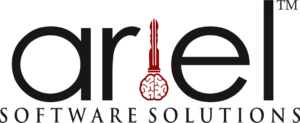
Data isn’t just the backbone of modern businesses, it’s their most valuable asset. In 2025, as industries navigate a landscape dominated by digital transformation and fierce competition, top data analytics tools 2025 have become indispensable. They enable organizations to make sense of massive datasets, uncover hidden opportunities, and drive decisions backed by precise, actionable insights. The evolution of these tools isn’t just about staying relevant; it’s about staying ahead.
What makes 2025 unique is the convergence of advanced technologies like AI, cloud computing, and machine learning within these tools, creating unparalleled efficiency and scalability. From dynamic visualizations to predictive analytics, the best analytics platforms in 2025 are empowering businesses to innovate, strategize, and grow like never before. Let’s dive into the top five tools leading the charge and redefining what’s possible in the realm of analytics.
Detailed Overview of Each Tool
- 1. Tableau
Overview: Tableau remains a market leader in data visualization, offering intuitive drag-and-drop capabilities that allow users to create interactive dashboards and detailed reports effortlessly. It is widely used across industries for its ability to simplify complex datasets and present them in a visually compelling manner.
Key Features:
- AI-Driven Insights: Leverages machine learning to provide predictions and trends automatically.
- Integration Capabilities: Connects seamlessly with popular platforms like Salesforce, Azure, and Google Analytics.
- Real-Time Analytics: Enables live data connections for up-to-date reporting and monitoring.
- Mobile Optimization: Offers responsive dashboards that can be accessed on mobile devices for on-the-go analysis.
Why Choose Tableau: Tableau’s ability to combine simplicity with powerful analytics makes it an excellent choice for businesses looking to communicate data-driven narratives effectively. Its vibrant community and extensive learning resources add significant value for users.
A healthcare organization employs Tableau to monitor patient data and optimize resource allocation in real-time.
- 2. Microsoft Power BI
Overview: Microsoft Power BI has solidified its position as a versatile and cost-effective business intelligence tool, perfect for organizations of all sizes. Its close integration with the Microsoft ecosystem provides added benefits for those already using tools like Excel and Azure.
Key Features:
- Advanced AI Features: Offers natural language processing for querying data and detecting anomalies.
- Integration with Microsoft Products: Works seamlessly with Excel, Teams, Dynamics 365, and Azure Synapse Analytics.
- Scalable Solutions: Tailored for small businesses as well as large enterprises with growing data needs.
- Custom Visualizations: Enables users to create custom visuals to match specific business requirements.
Why Choose Power BI: Its affordability, scalability, and deep integration with the Microsoft stack make Power BI an excellent choice for businesses looking for comprehensive analytics at a competitive price point.
Want to know more about how Power BI compares to Tableau for your business? Check out our previous blog, ‘Power BI vs. Tableau: The Ultimate Guide to Business Intelligence Tools for Data-Driven Decisions.’ It dives deep into the strengths and weaknesses of both tools, helping you choose the best one for your needs!
An e-commerce company uses Power BI to create dashboards for tracking daily sales, customer behavior, and inventory levels.
- 3. Google Looker (formerly Looker)
Overview: Acquired by Google Cloud, Looker offers a modern business intelligence approach that simplifies data exploration and delivers actionable insights. It is particularly well-suited for organizations leveraging Google Cloud services.
Key Features:
- SQL-Based Modeling Layer: Simplifies the process of querying and exploring data.
- Integration with Google Cloud: Works seamlessly with BigQuery, Google Sheets, and other cloud services.
- Customizable Dashboards: Enables users to tailor dashboards to specific metrics and KPIs.
- Real-Time Collaboration: Supports multiple users working on the same data models simultaneously.
Why Choose Looker: For businesses already invested in the Google ecosystem, Looker provides a seamless experience that optimizes cloud-based analytics and collaborative workflows.
A digital marketing agency leverages Looker to analyze campaign performance and ROI across multiple advertising platforms.
- 4. Databricks
Overview: Built on Apache Spark, Databricks is a unified platform for data engineering, data science, and machine learning. Its versatility makes it a go-to choice for organizations dealing with large datasets and advanced analytics needs.
Key Features:
- Big Data Processing: Capable of processing petabytes of data with speed and efficiency.
- Machine Learning Integration: Includes pre-built models and integration with ML frameworks like TensorFlow and PyTorch.
- Collaborative Notebooks: Offers shared workspaces for data scientists and analysts to collaborate in real-time.
- Scalability: Designed to handle workloads of any size, from startups to large enterprises.
Why Choose Databricks: If your business requires advanced analytics, machine learning, or big data processing, Databricks delivers unmatched performance and flexibility. Its integration with cloud providers adds further scalability.
A retail company uses Databricks to analyze customer purchase data from multiple channels (e-commerce, in-store, and mobile app). By integrating this data, the company builds machine learning models to predict customer preferences and recommend personalized product offerings, boosting sales and customer satisfaction.
- 5. Qlik Sense
Overview: Qlik Sense is a cutting-edge analytics tool known for its unique associative analytics engine, which helps users uncover hidden relationships in data. It’s designed for self-service analytics, enabling users of all skill levels to explore and analyze data.
Key Features:
- Associative Analytics Engine: Enables non-linear exploration of data, uncovering relationships that traditional tools may miss.
- Augmented Analytics: AI-powered tools provide automated insights and suggest visualizations.
- Robust Data Governance: Ensures data security and compliance, essential for regulated industries.
- Cross-Platform Functionality: Works seamlessly across devices, including mobile and desktop.
Why Choose Qlik Sense: Its focus on data discovery and intuitive self-service analytics makes Qlik Sense a valuable tool for organizations seeking to democratize data access and exploration.
A manufacturing company uses Qlik Sense to monitor production line performance by integrating IoT sensor data. This helps identify bottlenecks, predict equipment failures, and optimize production efficiency in real-time, reducing downtime and costs.
| Tool | Overview | Key Feature | Why Choose |
|---|---|---|---|
| Tableau | Market leader in data visualization with intuitive dashboards. | AI-driven insights, real-time analytics, mobile optimization, seamless integration. | Combines simplicity with robust visualization and extensive learning resources. |
| Microsoft Power BI | Versatile and cost-effective BI tool integrated with Microsoft products. | Advanced AI features, custom visualizations, scalable solutions, integration with Microsoft ecosystem. | Affordable, scalable, and deeply integrated with Microsoft tools. |
| Google Looker | Modern BI tool with strong Google Cloud integration. | SQL-based modeling, customizable dashboards, real-time collaboration, cloud integration. | Ideal for cloud-centric businesses invested in the Google ecosystem. |
| Databricks | Unified platform for data engineering and machine learning. | Big data processing, collaborative notebooks, machine learning integration, scalability. | Unmatched performance and flexibility for advanced analytics and big data needs. |
| Qlik Sense | Self-service analytics with unique associative analytics engine. | Associative analytics, augmented analytics, robust data governance, cross-platform functionality. | Democratizes data access and exploration with a focus on discovery. |
Interested in how big data and business intelligence can drive growth? Explore our previous blog on ‘Data-Driven Decision Making in Business: Leveraging Big Data and Business Intelligence for Growth.’ Discover strategies and tools that help you make smarter, faster decisions to fuel your business success!
Conclusion

In a world where data drives every decision, having the right analytics tool isn’t just an advantage; it’s necessary. The top data analytics tools 2025 we’ve explored stand out for their ability to simplify complexity, provide actionable insights, and fuel innovation. Whether you’re looking to streamline your operations, uncover new opportunities, or explore data analytics trends in 2025, choosing the right platform is the first step toward success.
At Ariel Software Solutions, we turn data potential into business performance. Whether it’s crafting tailored dashboards in Tableau or unleashing the full power of Microsoft Power BI, we help you harness data to its fullest.
Ready to transform your data into your strongest asset?
Let’s connect today and build a smarter, data-driven future together!




